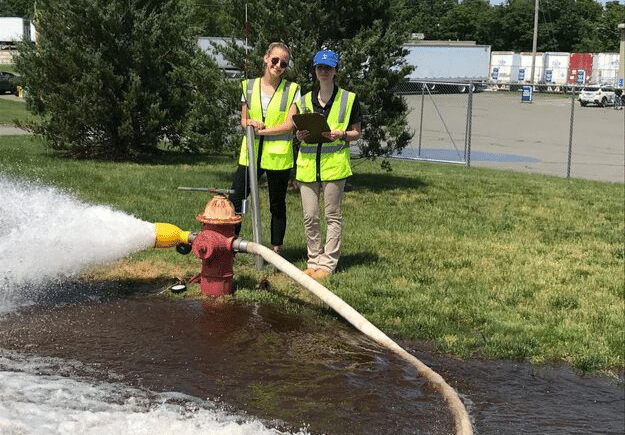Unidirectional Flushing Programs (UDF)
Unidirectional flushing is a unique process utilized to maintain a distribution system as well as learn critical information about the system, allowing utilities to make future improvements based on the information acquired.
 The primary goal of unidirectional flushing is to clean water mains, removing as much sediment and loose tuberculation as possible, including bio slime, iron, and manganese deposits. Performing unidirectional flushing on an annual basis helps to avoid tuberculation and sedimentation buildup; water mains that are not flushed on a regular, scheduled basis run the risk of building up tuberculation to the point that it cannot be removed by flushing. Removal of tuberculation is of critical importance, as buildup can have a significant, negative impact on water quality, fire flows, and distribution system efficiency.
The primary goal of unidirectional flushing is to clean water mains, removing as much sediment and loose tuberculation as possible, including bio slime, iron, and manganese deposits. Performing unidirectional flushing on an annual basis helps to avoid tuberculation and sedimentation buildup; water mains that are not flushed on a regular, scheduled basis run the risk of building up tuberculation to the point that it cannot be removed by flushing. Removal of tuberculation is of critical importance, as buildup can have a significant, negative impact on water quality, fire flows, and distribution system efficiency.
Unidirectional flushing provides many secondary benefits as well. Exercising valves and hydrants regularly prolongs the life of the valves. Flushing can also help locate broken valves and hydrants when they are utilized during the flushing process, locate closed valves or other obstructions in the water mains, and help narrow down a search area when trying to determine the cause of water quality or pressure issues in a specific area of the system. Also, there are often discrepancies between the hydraulic model and the distribution system that can be discovered and addressed during flushing. Lastly, flushing helps to determine or disprove suspected system issues.
A UDF utilizes a verified water system hydraulic model to determine a flushing procedure to produce acceptable velocities while maintaining appropriate system pressures. Also, the program utilizes valves to isolate sections of the distribution system to prevent stirred up debris from traveling to other areas of the system. Each step of the process is important, and a successful flushing program is a continuous process: the data should be compared on a yearly basis, at a minimum. Implementing a flushing program, and analyzing the data it provides, is an excellent way to keep a distribution system in top performance, improve water quality, and therefore improve the overall quality of the area being served.

